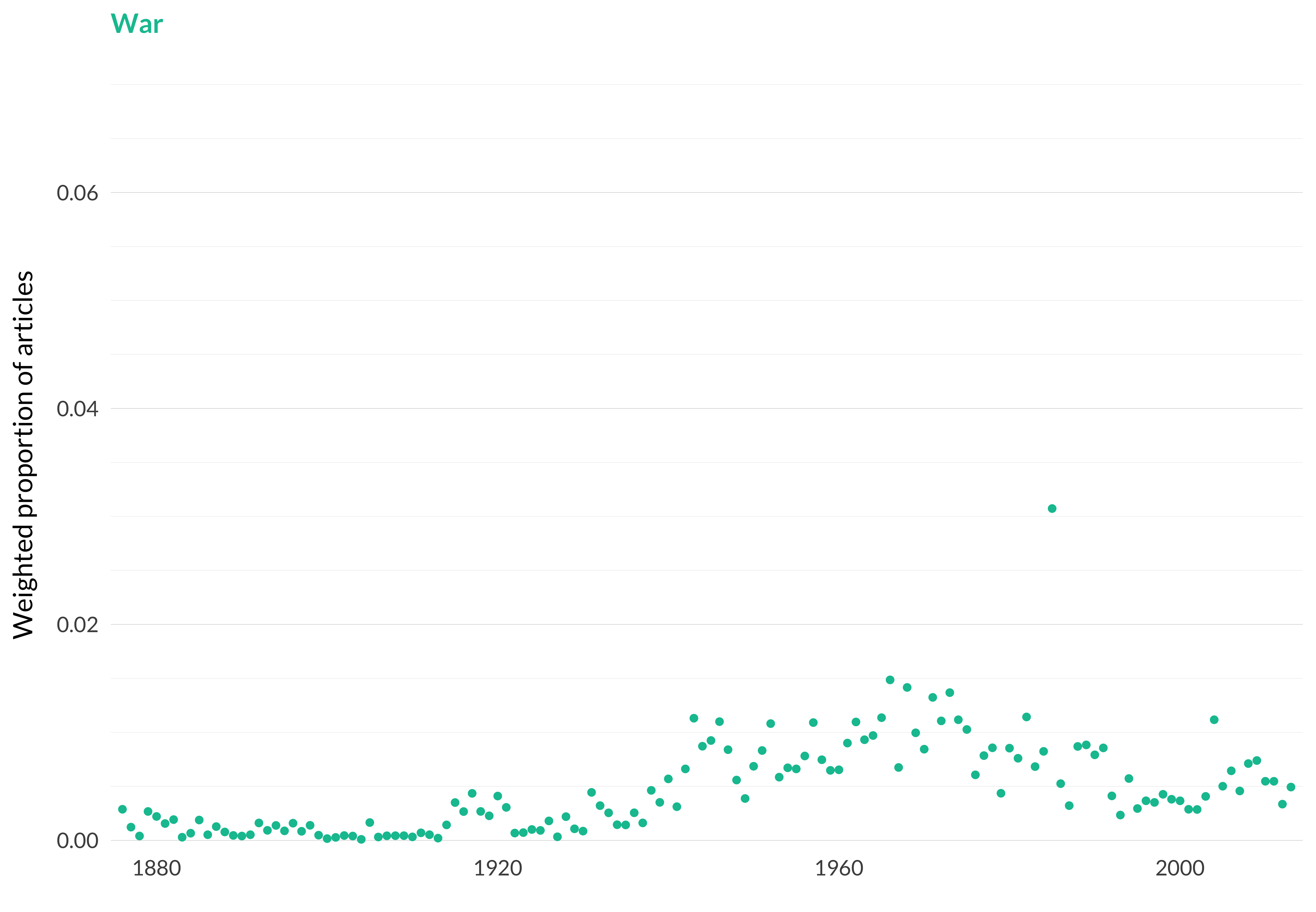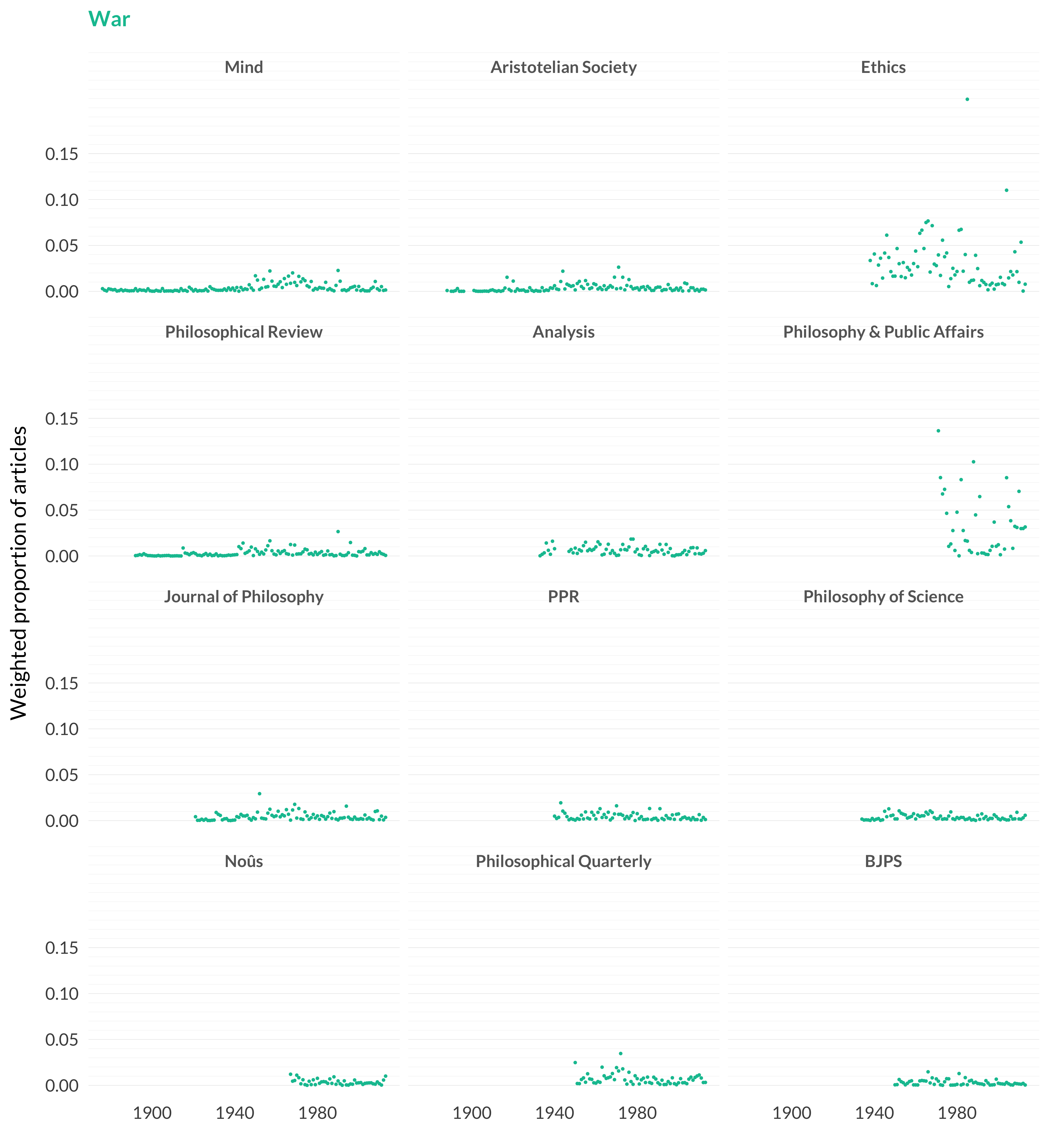2.41 War
Category: Social and Political
Keywords: military, war, nuclear, rule, voting, vote, deterrence, rules, violence, soviet, country, attack, majority, nations, nation
Number of Articles: 197
Percentage of Total: 0.6%
Rank: 77th
Weighted Number of Articles: 218.9
Percentage of Total: 0.7%
Rank: 77th
Mean Publication Year: 1975.8
Weighted Mean Publication Year: 1974.2
Median Publication Year: 1974
Modal Publication Year: 1985
Topic with Most Overlap: Liberal Democracy (0.0495)
Topic this Overlaps Most With: Liberal Democracy (0.0272)
Topic with Least Overlap: Beauty (0.00047)
Topic this Overlaps Least With: Psychology (0.00043)

Figure 2.100: War.

Figure 2.101: War articles in each journal.
Comments
I’ve called this war, and that is mostly what it is, though there are two ways in which this is misleading.
One is that the topic is quite broadly about the ethics of what states do. For most of the period that I’m looking at, the state action that philosophers were most interested in was the act of going to war. But the topic includes articles on the relationship between states and international institutions, as well as a few articles on voting and democracy. I suspect that some recent work on immigration, and whether states are permitted to point guns at people who have the temerity to move around the world, would end up here if I extended the study to the present day.
The other, which is related, is that this topic is really focused on state-level actions. Contemporary philosophers writing about war have spent more time focusing on what is permissible and impermissible for individual soldiers to do. And that work is classified with work on self-defence.